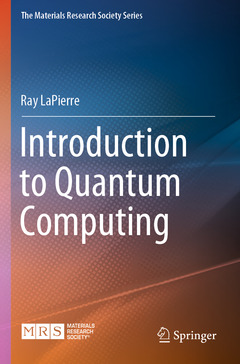Introduction to Quantum Computing , 1st ed. 2021 The Materials Research Society Series
Auteur : LaPierre Ray

Provides a comprehensive standalone text for an upper-undergraduate course on quantum computing
Assumes only basic knowledge in quantum mechanics, making it accessible to students in physics and engineering
Enhances learning with plenty of end-of-chapter exercises
Request lecturer material: sn.pub/lecturer-material
Date de parution : 09-2022
Ouvrage de 366 p.
15.5x23.5 cm
Disponible chez l'éditeur (délai d'approvisionnement : 15 jours).
Prix indicatif 52,74 €
Ajouter au panierDate de parution : 09-2021
Ouvrage de 366 p.
15.5x23.5 cm
Disponible chez l'éditeur (délai d'approvisionnement : 15 jours).
Prix indicatif 52,74 €
Ajouter au panier


